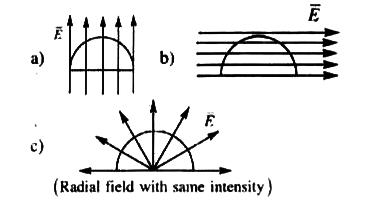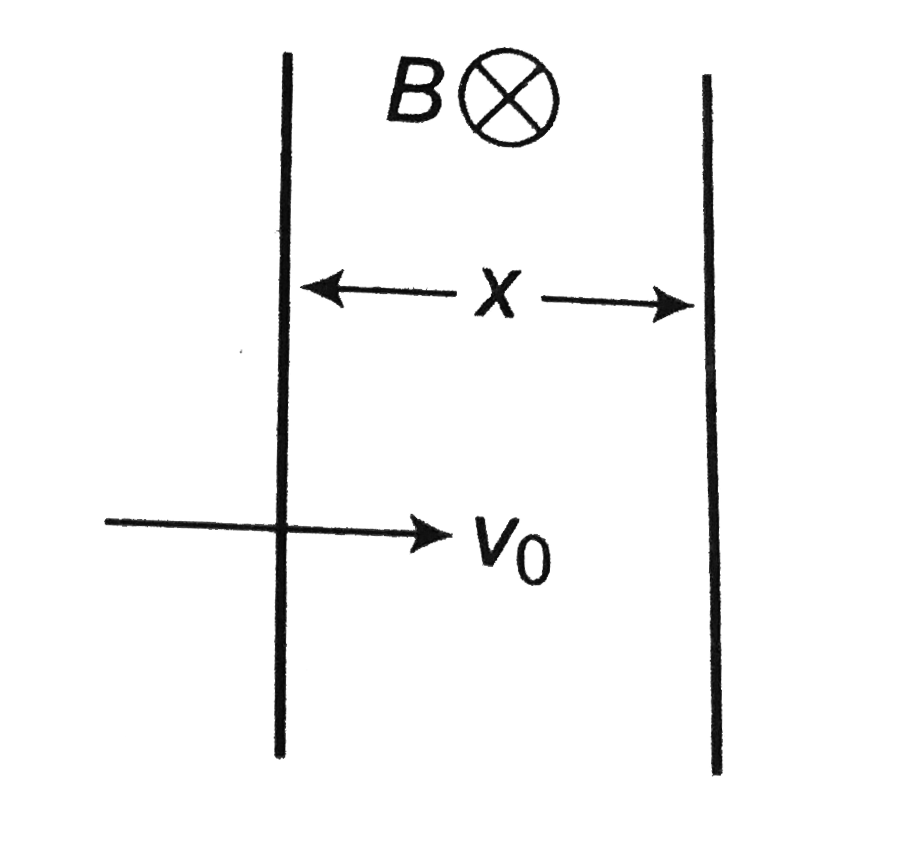An electron is projected with velocity v0 in a unifrom electric field E perpendicular to the field Again it is projectced with velocity v0 perpendicular to a unifrom magnetic field B. if r1 is initial radius of curvature just after entering in the electric field and r2 is initial radius of curvature just after entering in magnetic field then the ratio r1/r2 is equal to .
Bv(2)oE
BE
EvoB
BvoE
The correct Answer is:D
To solve the problem, we need to find the ratio of the initial radius of curvature of an electron projected into a uniform electric field E and a uniform magnetic field B. Let's denote:
- r1 as the radius of curvature in the electric field,
- r2 as the radius of curvature in the magnetic field,
- v0 as the initial velocity of the electron,
- q as the charge of the electron,
- m as the mass of the electron.
Step 1: Determine the radius of curvature in the electric field (r1)
In a uniform electric field, the force acting on the electron is given by:
FE=qE
This force provides the centripetal force required for circular motion. The centripetal force can be expressed as:
Fc=mv20r1
Setting the two forces equal gives:
qE=mv20r1
Rearranging this equation to solve for r1:
r1=mv20qE
Step 2: Determine the radius of curvature in the magnetic field (r2)
In a uniform magnetic field, the magnetic force acting on the electron is given by:
FB=qv0B
Again, this force provides the centripetal force for circular motion:
Fc=mv20r2
Setting the forces equal gives:
qv0B=mv20r2
Rearranging this equation to solve for r2:
r2=mv0qB
Step 3: Find the ratio r1r2
Now we can find the ratio of the two radii of curvature:
r1r2=mv20qEmv0qB
This simplifies to:
r1r2=mv20qE⋅qBmv0=v0BE
Final Result
Thus, the ratio of the initial radius of curvature just after entering the electric field to that just after entering the magnetic field is:
r1r2=v0BE
- r2 as the radius of curvature in the magnetic field,
- v0 as the initial velocity of the electron,
- q as the charge of the electron,
- m as the mass of the electron.
FE=qE
This force provides the centripetal force required for circular motion. The centripetal force can be expressed as:
Fc=mv20r1
Setting the two forces equal gives:
qE=mv20r1
Rearranging this equation to solve for r1:
r1=mv20qE
FB=qv0B
Again, this force provides the centripetal force for circular motion:
Fc=mv20r2
Setting the forces equal gives:
qv0B=mv20r2
Rearranging this equation to solve for r2:
r2=mv0qB
r1r2=mv20qEmv0qB
This simplifies to:
r1r2=mv20qE⋅qBmv0=v0BE
r1r2=v0BE
Topper's Solved these Questions
- MAGNETIC EFFECT OF CURRENT AND MAGNETISMBOOK - DC PANDEY ENGLISHCHAPTER - MAGNETIC EFFECT OF CURRENT AND MAGNETISMEXERCISE - Only One Option is Correct
45 Videos
- MAGNETIC EFFECT OF CURRENT AND MAGNETISMBOOK - DC PANDEY ENGLISHCHAPTER - MAGNETIC EFFECT OF CURRENT AND MAGNETISMEXERCISE - More than One Option is Correct
25 Videos
- LAWS OF THERMODYNAMICSBOOK - DC PANDEY ENGLISHCHAPTER - LAWS OF THERMODYNAMICSEXERCISE - Level 2 Subjective
18 Videos
- MEASUREMENT AND ERRORSBOOK - DC PANDEY ENGLISHCHAPTER - MEASUREMENT AND ERRORSEXERCISE - Subjective
19 Videos
Similar Questions
Knowledge Check
An electron is moving with an initial velocity →v=v0ˆi and is in a magnetic field →B=B0ˆj. Then it's de-Broglie wavelength
Aremains constantBincreases with timeCdecreases with timeDincreases and decreases periodically
A proton and an electron are projected into a region of uniform magnetic field in a direction perpendicular to the field. If they have the same initial velocities then
View SolutionFind the flux due to the electric field through the curved surface (R is radius of curvature)

View SolutionA semicircular loop of radius R is rotated with an angular velocity ω perpendicular to the plane of a magnetic field B as shown in the figure. Emf Induced in the loop is

View SolutionA charged particle enters into a uniform magnetic field with velocity v0 perpendicular to it , the length of magnetic field is x=√32R, where R is the radius of the circular path of the particle in the field .The magnitude of charge in velocity of the particle when it comes out of the field is

View SolutionAn electron is moving with an initial velocity →v=v0ˆi and is in a magnetic field →B=B0ˆj. Then it's de-Broglie wavelength
View SolutionIf a proton is projected in a direction perpendicular to a uniform magnetic field with velocity v and and electron is projected along the line of force, what will happen to proton and electron?
View SolutionA ring of radius R moves with a velocity v in a uniform static magnetic field B as shown in diagram. The emf between P and Q is
View Solution
